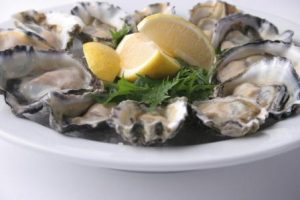
Several traditions relate to the so called “r” months. Among the most popular is the belief that in North America, oysters, clams, and other shellfish should only be harvested and consumed during months of the year that contain the letter “r” in their name. The “r” months are all cool; September through April.
This tradition originates from colonial periods when shellfish were prone to spoiling if exposed to warm temperatures. Another reason for the r month rule relates to quality. Oysters and clams spawn in the warm summer months, usually May through August. Spawning causes them to become soft, watery, and less flavorful than shellfish harvested in cooler, non-spawning months.
Although modern oysters are just as prone to spoiling as their ancestors, modern technology has allowed producers and suppliers to transport, process and sell oysters at cooler temperatures.
Another technological innovation which makes the r month rule less important is the development of triploid oyster stocks for shellfish aquaculture. Triploid oysters are bred to be sterile, which allows them to grow faster and remain delicious, even during the warm season.
By learning more about seafood, consumers are making better choices. Although the r month rule can still be a guideline for quality of wild caught oysters, consumers will find a good selection of high quality, healthy oysters from North America’s shellfish farming industry.
Related Information